Originally posted on April 25th, 2019 by Gerald A. Livings
When I was in college taking an “Economics 101” class, I remember having this one point hammered over and over again: “The law of supply and demand states that a low supply and high demand for any product or service will typically increase its price”. That brings me to the title of this post. “Buying Scarcity”. After some basic info, I will tie it into the jewelry trade.
So What is Scarcity?
Scarcity refers to a problem of basic economics. The problem between limited resources and limitless desire of those resources. How do you divide up your resources to provide for your basic needs, and have some left over for things you do not need. Any resource that has a non-zero cost to consume is scarce to some degree, but what matters in practice is relative scarcity. This can change depending on many factors. Natural forces, psychology, sales pitches, politics, pop culture.
The price of new products depend on the cost of production (Materials, labor, and transportation costs). Scarcity value is the factor that increases the perceived value of an item or service based on the perceived scarcity of the supply of that item. Relative price is based upon the perception of scarcity of the item.
lets start by looking at the first chart. While it is very simplistic, it is a good basic visual for what I am talking about. I chose to label the left side “Value”, instead of “Price” as I feel it is easier to visualize. This is a pretty standard chart for supply and demand. While I can pick any resource that has a non-zero cost, I am going with an item that has seen it’s share of scarcity in the last few years: Hostess Twinkies..
Remember when Hostess went under and Twinkies were no longer going to be made? The price of Twinkies skyrocketed online as Hostess planned to shut down. They were being sold for THOUSANDS of dollars each!
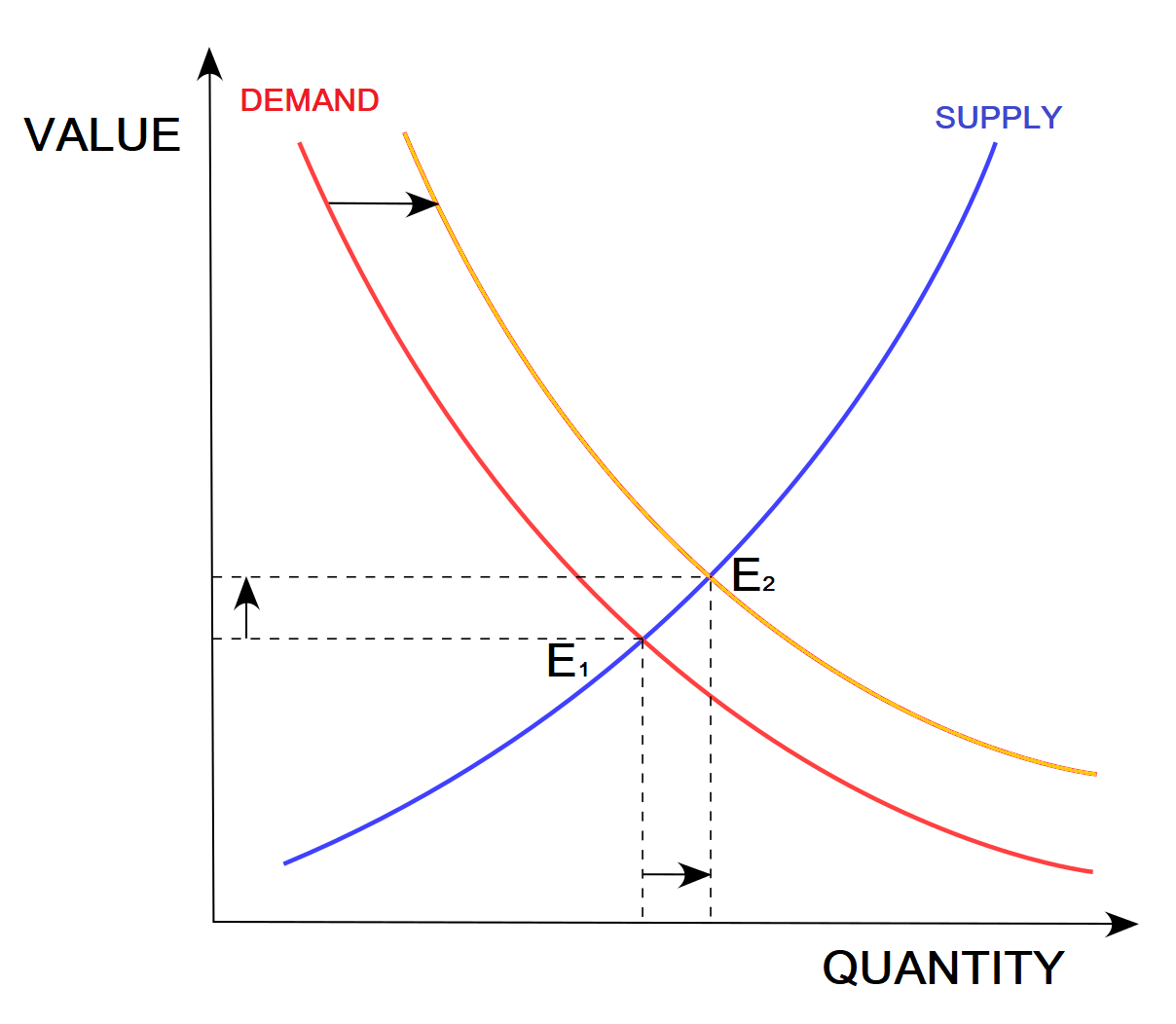
For Twinkies, where value and demand cross at E1, that is equilibrium point. This is where most people will agree is a fair value for a Twinkie and most likely to purchase one. This point has stayed fairly steady since the 1930s with minor fluctuations.
Now look at the gold line. This would be the perceived value on November 21, 2012 and for about 10 months after that date. That is the perceived value when something has happened. Hostess and the Union for the workers could not agree on a contract, and the loss of business killed the company in a very short time. For a short time, there were going to be no more Twinkies.
When the perceived value of Twinkies went up, people were willing to spend more on them. A lot more! This is scarcity at work. Look at the line where it crosses at E2. This is the new equilibrium point where value and demand cross.
Do you see how value can change according to how rare an item is? So lets tie that into jewelry, gems, and diamonds.
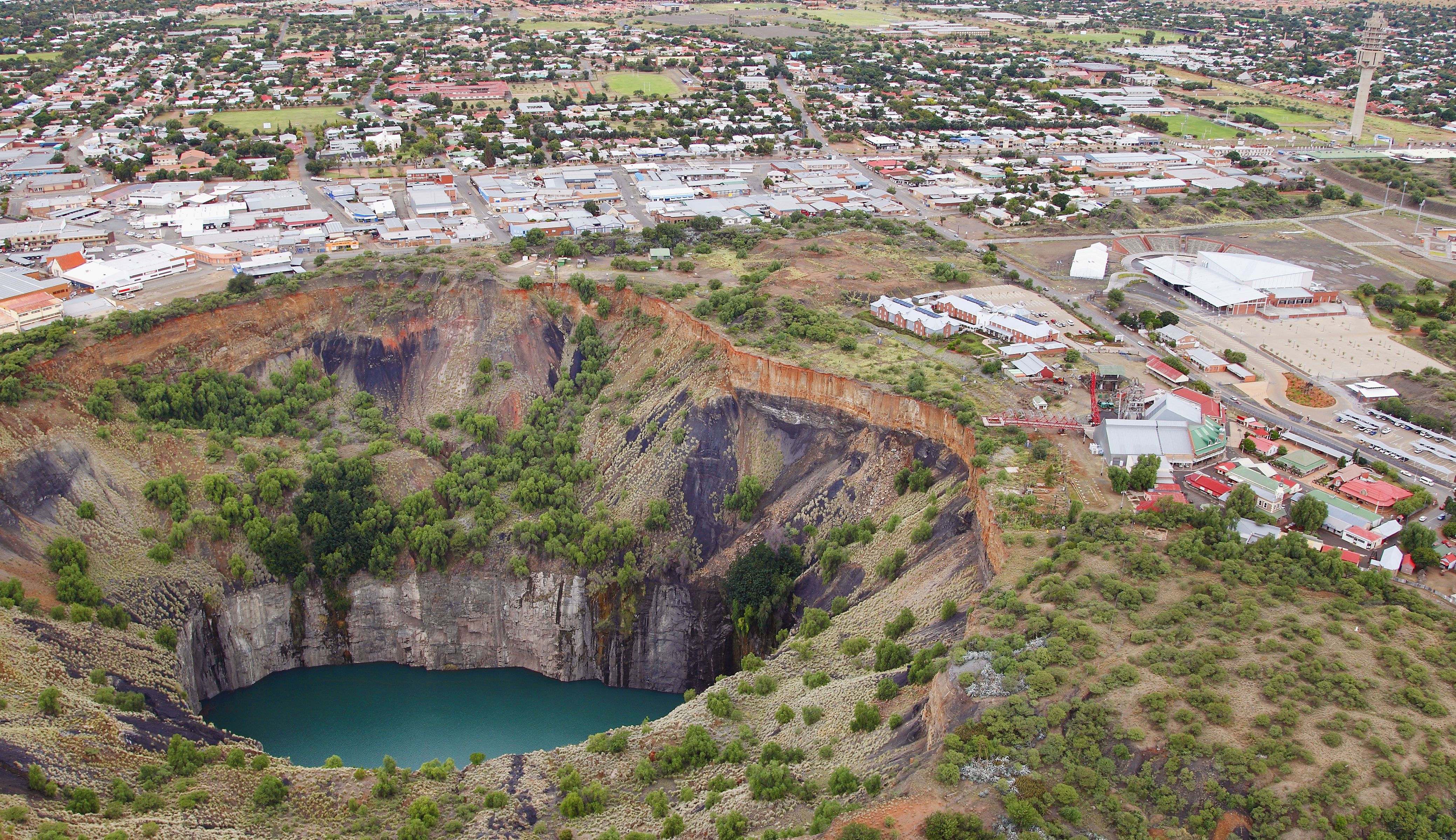
Although diamonds are one of the most popular gems, this hasn’t always been the case. Only in the last century and a half did diamonds become readily available. Prior to that, ruby and sapphire were the most popular gems, especially for engagement rings.
Now I am going to tie this into diamonds. Keep in mind the chart above as it is still very relevant. I am only talking about one of the 4 C’s. Clarity. Because diamond prices are based upon scarcity and rarity, the price premium for perfect clarity is substantial. So lets talk about how rare clarity is in diamonds.
Many people that I have spoken with have voiced the ideas that all diamonds dug from the ground have the following things in common:
- All of them are made into jewelry
- The color and clarity of mined diamonds are evenly distributed
- Most diamonds mined are over 1 carat in size
- Most diamonds are uniformly, well shaped crystals
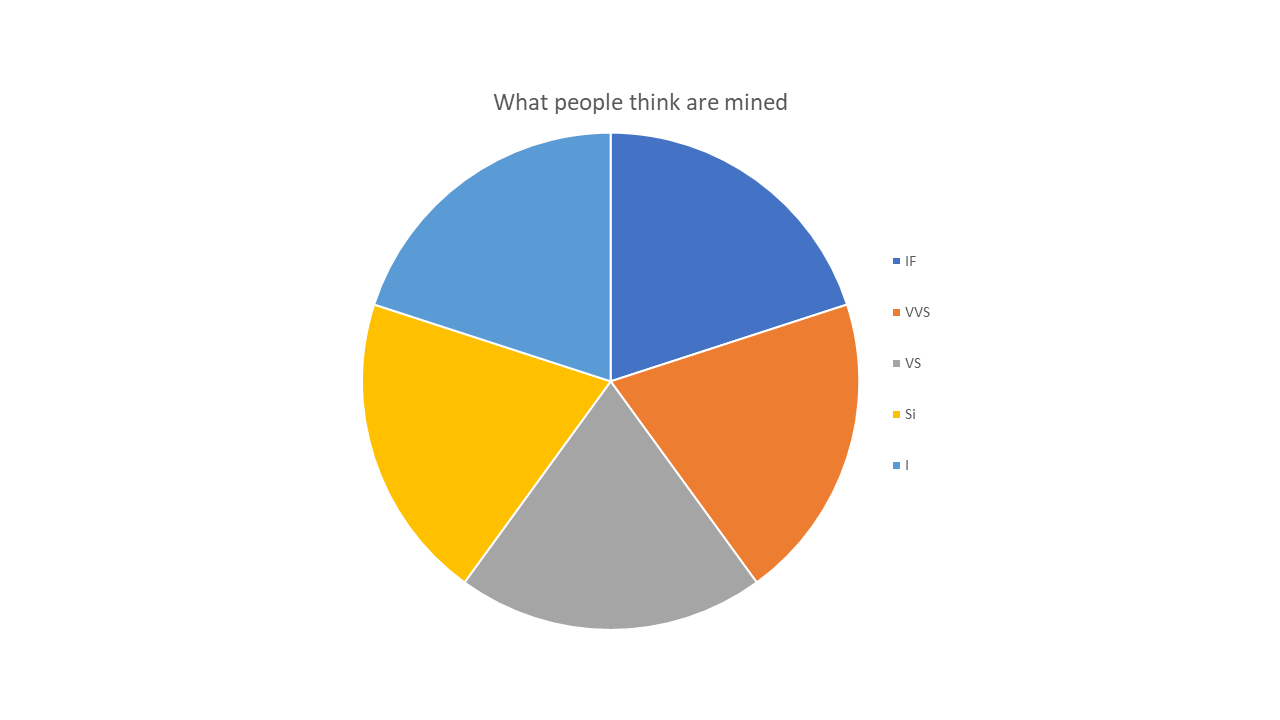
What people think are mined worldwide. This is how many people think ALL mined diamonds are divided up for clarity. This is far from the truth.
So lets do that list again with the correct information:
- only about 10% of diamonds are gem quality. Most are used in other industries such as abrasives.
- Most mined diamonds are colored and are so included that they are opaque.
- The average size of diamond mined is about 0.10 ct. (I am still trying to verify this information.)
- A well shaped crystal is rare. Most mined diamonds are randomly shaped pebbles.
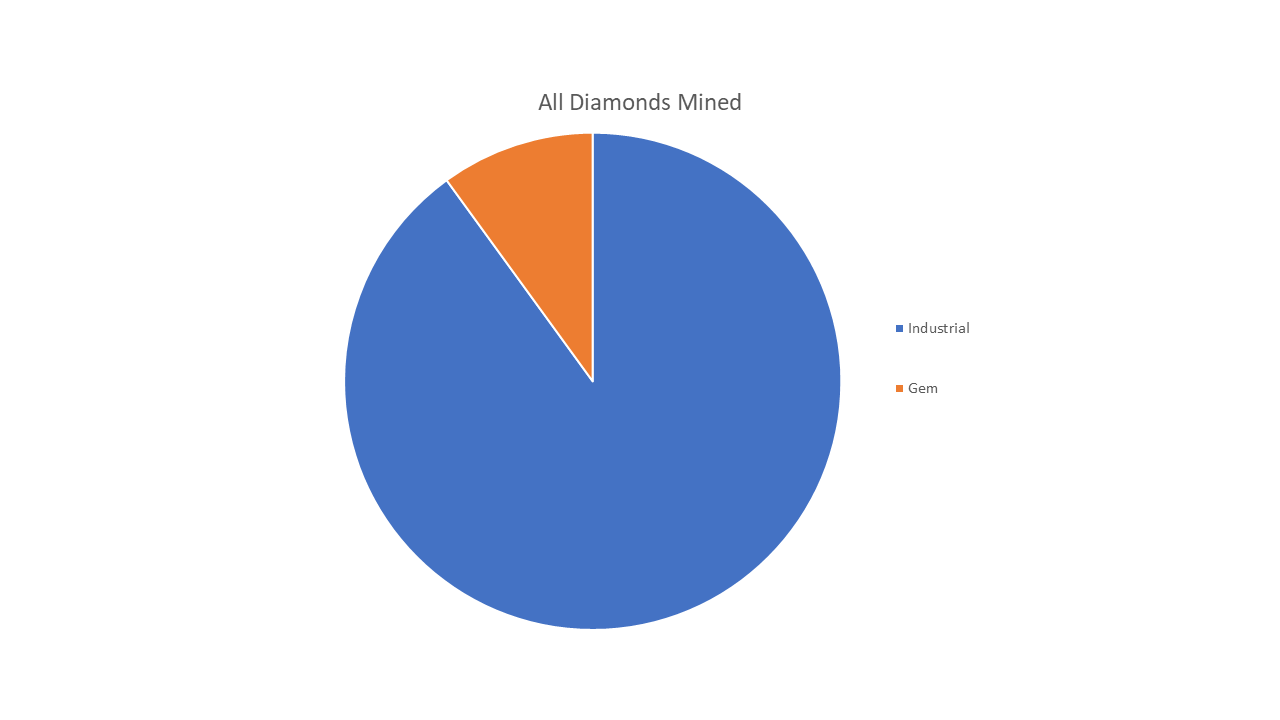
Real world diamond production. See the blue section? That represents the gems that never see the inside of a jewelry store. You might buy some as sandpaper, or plated with metal onto a drill bit or knife sharpener. The small section represents on average about 10% of diamonds mined
80% to 90% of all diamonds mined are not gem quality.
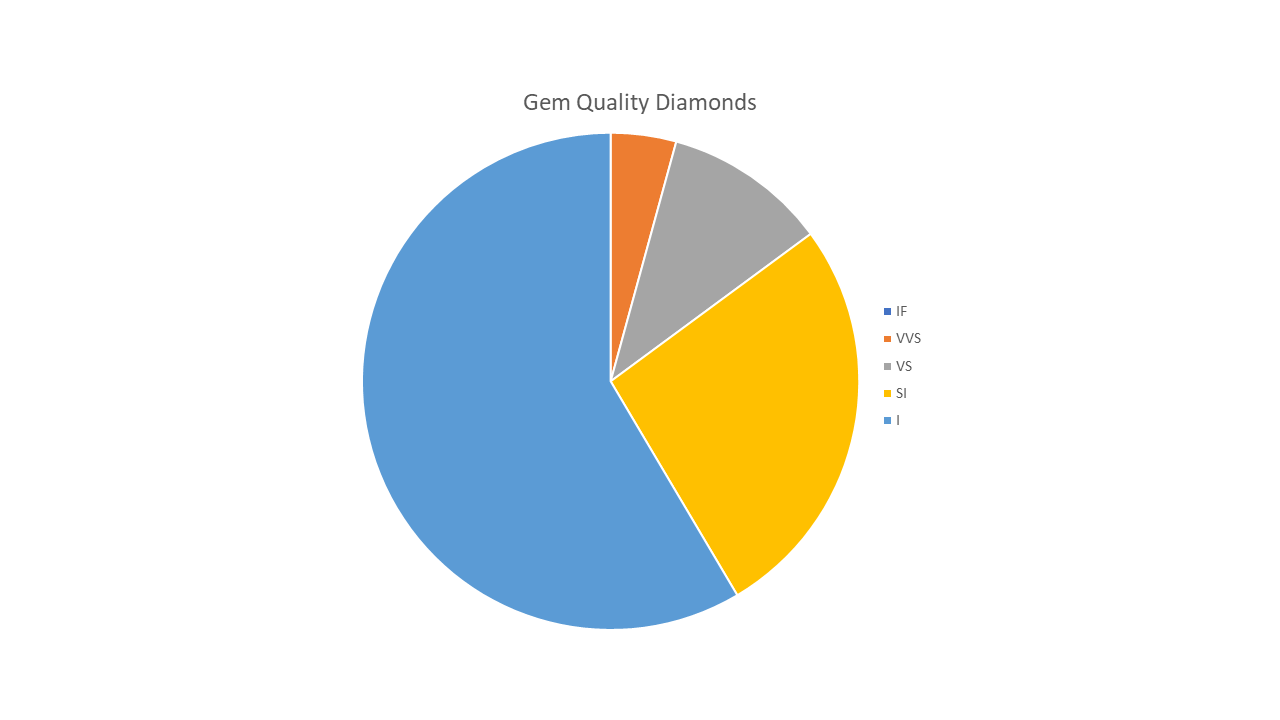
Now lets expand that smaller section and give it it’s own pie chart. This represents the clarity of mined, gem quality diamonds. An included diamond is very common while a flawless diamond is exceptionally scarce and rare. How does this affect price? This pie chart is divided into sections representing approximate percentages for clarity of mined diamonds. 5 sections. IF, VVS, VS, SI, and I.
Now look closely. There are 5 sections listed but only 4 sections in the pie chart. That is not a mistake. The pie slice representing IF clarity diamonds is so small, it does not even show up on the chart! Less than 1% of gem quality diamonds are internally flawless.
Now consider how this will affect value and demand.
At a small size under 0.25ct, the price difference between an I clarity diamond and an IF clarity diamond is only a few hundred dollars. But as the weight of the gem goes up, the price goes up as well. This is scarcity at work.
Diamonds are rare. A flawless diamond is exceptionally scarce and rare. A flawless diamond that is perfectly colorless is phenomenally scarce and rare. Think about how rare does that make diamonds that are perfect in color, clarity and also in cut?
This is just clarity. Color works the same way. To find a colorless rougfh diamond, with an IF clarity, that is well shaped to maximize the weight and be able to cut a well proportioned gem, and is larger than the average size mined, is rare. likely way less than a 1 in a million chance.
Worldwide, about 133 million carats of rough diamonds are produced each year. after removing industrial grades, this leaves about 13.3 million carats. About 0.7% of this rough is IF clarity . That gives us 93,100 carats of potential IF clarity rough (about 41 pounds). We have to remember the average size will be about 0.10 points in size so most of this will be a randomly shaped, multi-colored gravel.
Now we have to take this rough and cut it into gems. That involves removing unwanted parts of the diamond. This process can remove anywhere from 20% to 60% or more of the rough to get a salable gem. Lets call it 40%. That gives us 55,860 carets of IF gems to supply the world for 1 year.
Remember the average size? You start with a random rock that is about the size of the head of a quilting pin. This means after cutting, you will end up with a gem that is about 0.05 ct. Size is another thing that affects price. A one carat gem has to be cut from a rough that is more than one carat in weight.
So figure in clarity, size, color, cut to find a 1ct, IF clarity, D color diamond. What is the scarcity value at the intersection of all of those variables?
After you look at all of the variables, for the worldwide market each year, there is only about a pound of D/IF diamonds on the market. This is why diamonds cost so much. it is not because they are rare, but because the better quality diamonds are rare.
Thank you for reading and sharing this blog post. I hope you learned a bit about diamonds you did not know before.
